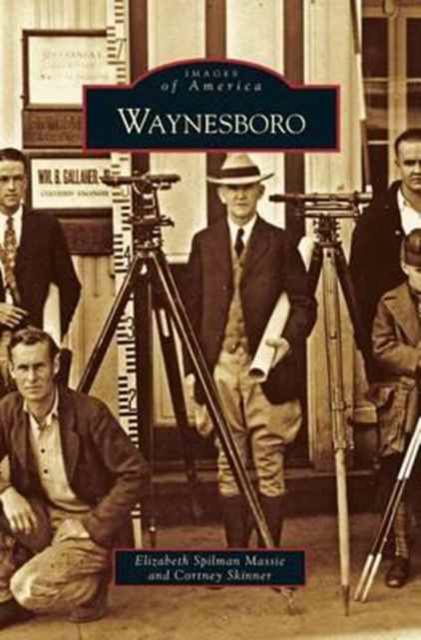
Je cadeautjes zeker op tijd in huis hebben voor de feestdagen? Kom langs in onze winkels en vind het perfecte geschenk!
- Afhalen na 1 uur in een winkel met voorraad
- Gratis thuislevering in België vanaf € 30
- Ruim aanbod met 7 miljoen producten
Je cadeautjes zeker op tijd in huis hebben voor de feestdagen? Kom langs in onze winkels en vind het perfecte geschenk!
- Afhalen na 1 uur in een winkel met voorraad
- Gratis thuislevering in België vanaf € 30
- Ruim aanbod met 7 miljoen producten
Zoeken
Omschrijving
Settled beside the Blue Ridge Mountains in the mid-1700s, Waynesboro was named after Revolutionary War general "Mad" Anthony Wayne. On March 2, 1865, the Civil War shook Waynesboro in the form of a short, devastating battle. Following the war, the establishment of the crossing lines of the Norfolk and Western Railway and Chesapeake and Ohio Railroad in Waynesboro helped industries thrive. Rife Ram and Pump Works, Virginia Metalcrafters, DuPont, and Invista are a few of the manufacturers that have called Waynesboro home during the last 120 years. Town and mountainside apple orchards also flourished. Despite some citizen resistance, Waynesboro and Basic City, the town across the South River, were joined in 1924. With the closing of many industries in the mid- to late 1900s, Waynesboro began to focus on its natural, historic, and cultural uniqueness to strengthen and redefine the city as it entered the 21st century. Images of America: Waynesboro looks back at Waynesboro's past, offering fascinating glimpses of its businesses, institutions, events, and people.
Specificaties
Betrokkenen
- Auteur(s):
- Uitgeverij:
Inhoud
- Aantal bladzijden:
- 130
- Taal:
- Engels
Eigenschappen
- Productcode (EAN):
- 9781531644802
- Verschijningsdatum:
- 3/06/2009
- Uitvoering:
- Hardcover
- Formaat:
- Genaaid
- Afmetingen:
- 170 mm x 244 mm
- Gewicht:
- 412 g

Alleen bij Standaard Boekhandel
+ 88 punten op je klantenkaart van Standaard Boekhandel
Beoordelingen
We publiceren alleen reviews die voldoen aan de voorwaarden voor reviews. Bekijk onze voorwaarden voor reviews.









